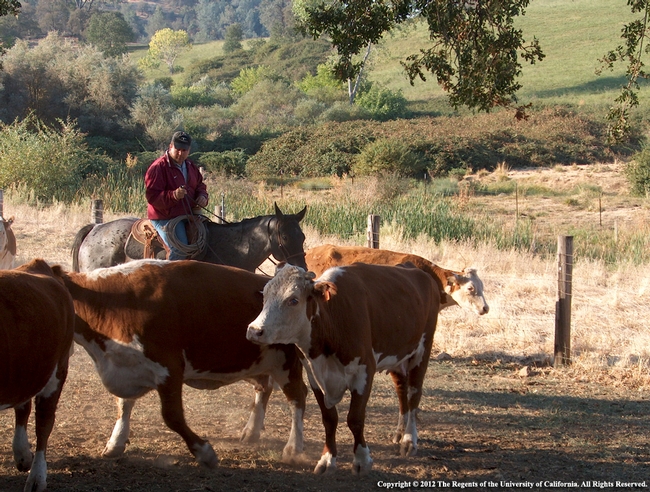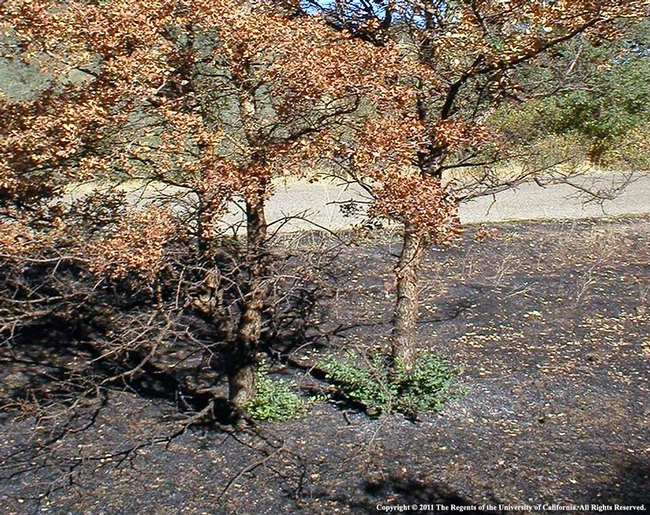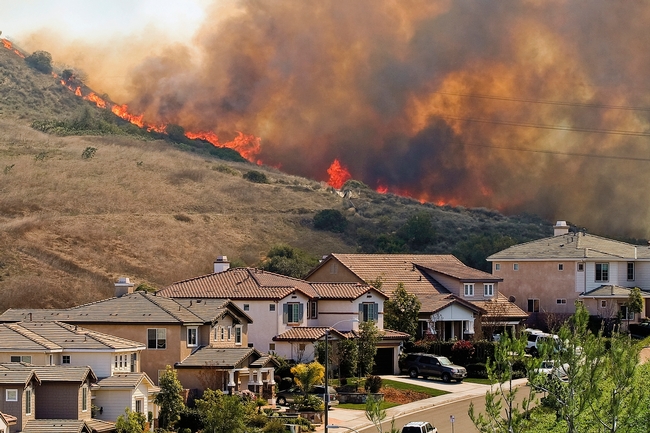Four years of drought has left California with acres of dry brush and dying trees, abundant fuel for wildfires. Currently, CalFIRE's fire map shows several major fires burning in California.
“There are two factors that help fires spread - winds and topography,” explained Scott L. Stephens, a professor of fire science in the Department of Environmental Science, Policy and Management at UC Berkeley, in Scientific American. “The thing about wind is, it can change so quickly and the fire will change with it — it can happen in 15 seconds,” said Stephens, who is also co-director of the Center for Fire Research and Outreach at UC Berkeley.
Wildfires are unpredictable, but there is much that residents of fire-prone areas can do to keep their families, homes and pets safe. UC Agriculture and Natural Resources has many online resources for homeowners and landowners in English and in Spanish for dealing with fire.
Protecting homes from fire
To protect houses in the wildland-urban interface from fire, homeowners should start with fire-resistant building materials and architectural features. The Center for Fire Research and Outreach at UC Berkeley has a toolkit for homeowners to assess their vulnerability to fire and offers advice for mitigating fire risk.

Protecting animals from fire
The School of Veterinary Medicine at UC Davis offers resources for preparing a plan for horses, livestock and pets in case of wildfire or other disaster. A disaster preparedness plan would include things like transportation for evacuating the animals and emergency shelter.
What to do after a fire
If your home is burned, the Center for Fire Research and Outreach has a list of resources and things to do after a fire, including contacting a local relief organization to help with housing, food and other essentials. Before re-entering the home or site, the center recommends checking with the fire department to ensure it is safe to do so.

In oak woodlands, wildfires are an ecologically important process. Fire may actually help sprouting oaks survive by eliminating competing plants and creating a more favorable seedbed for acorns to germinate, and reducing the habitat of wildlife species that eat acorns or seedlings, according to Doug McCreary, UC ANR Cooperative Extension advisor emeritus.
Wildfire in an oak woodland can kill some trees outright and leave others with burn damage that may or may not eventually kill them. UC Cooperative Extension has developed a quick method for assessing the extent of burn damage and the likelihood that an affected tree will survive. Instructions can be downloaded for free at http://anrcatalog.ucdavis.edu/Items/8445.aspx
For forest landowners, UC ANR has “Recovering from Wildfire,” a guide that covers how to protect land from erosion damage, where to get help and financial assistance, how to manage salvage harvesting, and how to help the forest recover from wildfire.
Preparing communities
UC ANR fire experts work with the California Fire Science Consortium to integrate science into sound fire prevention programs.
In the Lake Tahoe region, UC ANR Cooperative Extension advisor Susie Kocher collaborates with University of Nevada Cooperative Extension and Tahoe Basin fire agencies on a community education project called Living with Fire. Together they provide information for Lake Tahoe communities to prepare for wildfire. Many of the recommendations could apply to any community.
